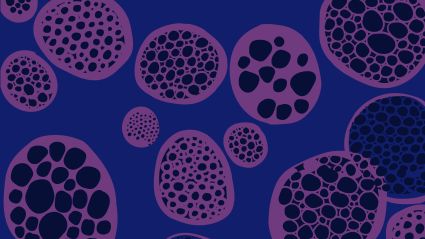
Situation
Sarcoidosis is defined by the dramatic accumulation of granulomas—dense clusters of immune cells—in organs throughout the body. Individuals living with sarcoidosis often go undiagnosed for years, enduring symptoms such as shortness of breath, extreme fatigue, difficulty breathing, joint pain, fever, and eye inflammation. These symptoms can persist anywhere from a few years to a lifetime—and there is no cure. Given the lack of understanding surrounding sarcoidosis, patients have limited treatment options, and those available are accompanied by extreme side effects such as diabetes and weight gain. Left untreated, sarcoidosis can lead to severe organ damage and even death.
Sarcoidosis attracts fewer federal research dollars than other inflammatory conditions, which partly explains why so few medical professionals are drawn to the field. The Ann Theodore Foundation came to the Milken Institute Science Philanthropy Accelerator for Research and Collaboration (SPARC) for guidance on how to leverage its philanthropic resources to help identify causes of sarcoidosis, determine criteria for proper diagnoses, and propose effective treatments.
Approach
In partnership with the Ann Theodore Foundation, SPARC dug deep into the landscape and identified several critically underfunded areas where philanthropic dollars could help advance the field and drive progress toward better treatments and, eventually, a cure for sarcoidosis. SPARC identified a number of barriers that could be addressed to advance what science understands about sarcoidosis and how it is treated.
As SPARC prepared to publish the landscape analysis and recommendations into a Giving Smarter Guide (GSG), the Ann Theodore Foundation chose to release the GSG alongside the launch of a new funding program, the Ann Theodore Foundation Breakthrough Sarcoidosis Initiative. This program was developed with help from our Scientific Advisory Board, made up of experts in the sarcoidosis field and from other disciplines.
Outcomes and Next Steps
The Sarcoidosis Giving Smarter Guide was the first step in catalyzing progress in an underfunded rare disease area. Following the release of the guide, the Ann Theodore Foundation issued its first request for proposals for grant funding in late 2021, with funding being awarded every year since. Together, this funding represents more than $10 million in deployed and committed resources, strengthening the research field and laying the foundation for better diagnostics and treatments.
Furthermore, each summer, SPARC, with support from the Ann Theodore Foundation, hosts an in-person gathering for scientists who received funding to study sarcoidosis. The purpose of these meetings is to facilitate the real-time sharing of new findings, foster new collaborations, and help the Ann Theodore Foundation identify the next steps and develop new funding strategies. In response to requests from investigators who expressed an interest in having more touchpoints to discuss their research and other ideas throughout the grant program, SPARC began coordinating quarterly check-ins among the investigators starting in the fall of 2022.
The program is still very young compared to the time it takes for scientific innovations to impact patients. However, it is already showing early signals of meaningful progress, including novel ways to meaningfully, track sarcoidosis risk and progress, new molecular targets for future therapeutics, and promising insights into triggers that cause the disease to begin.
This grant program has focused on funding the basic science and underlying biology of sarcoidosis and continues to explore new ways to propel the field forward.








